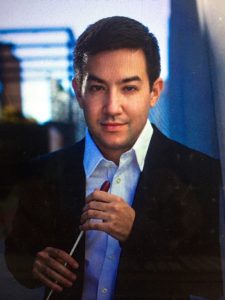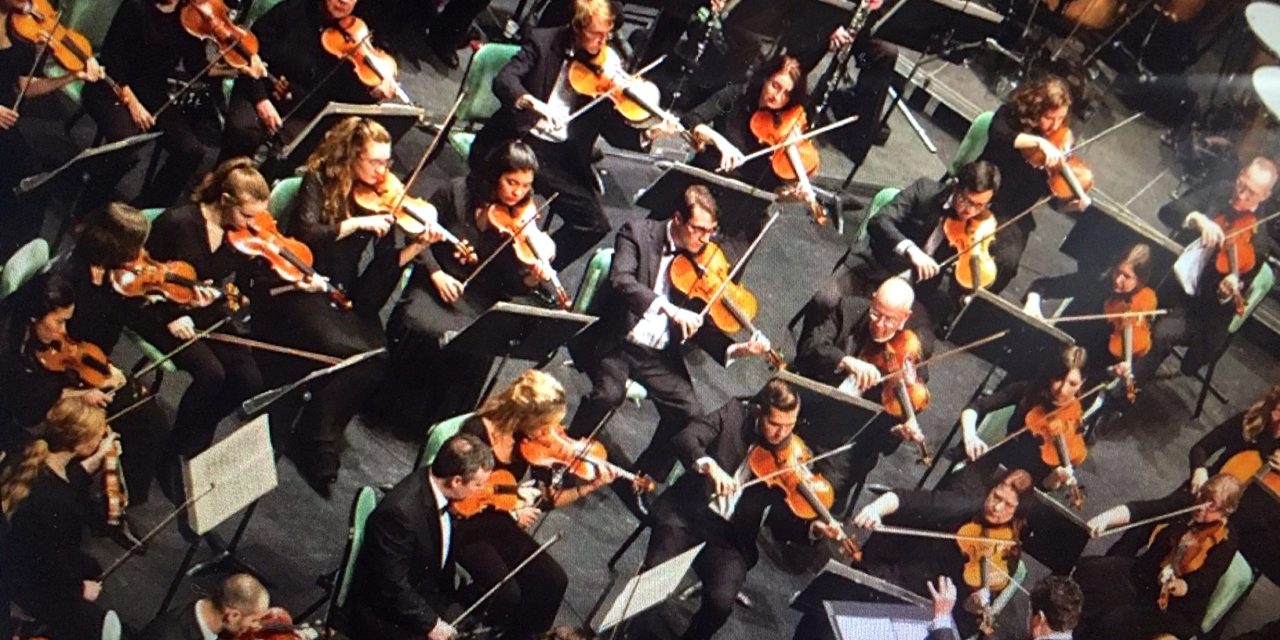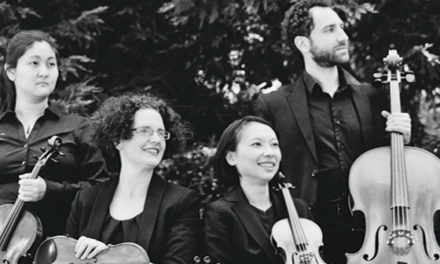DATE UPDATE: The broadcast of the Eugene Symphony’s January 2020 concert on KWAX-FM 91.1 will be at 10 a.m. on Friday, May 8. The original news release erroneously gave the date as Tuesday, May 5.
By Randi Bjornstad
It won’t be performed live with the musicians onstage in the Silva Concert Hall, but here’s a chance to hear what the Eugene Symphony played in January — either for the first time or again — on Friday, May 8, by tuning the radio to KWAX-FM 91.1 or streaming the concert live via computer.
Yes, of course, this is yet another result of the current sheltering-in-place and social-distancing phenomena occasioned by the Covid-19 epidemic, but it’s not a bad one, and it just might be a good idea in the future even when there’s no real necessity for it.
Francesco Lecce-Chong, the symphony’s music director and conductor, sent a piece to The Eugene Scene that describes what listeners can hear in the comfort of their own homes at 10 a.m. on Friday, May 8:

Francesco Lecce-Chong; photo by Anastasia Chernyavsky
For sure, I’m excited that our January 23 program from this year is being broadcast on KWAX on May 8. It was one of my favorite concerts of the season, and definitely one of the highlights was working with Finnish violinist, Elina Vähälä.
The Sibelius violin concerto is one of the most difficult in the repertoire, but it also is a concerto that is on the repertoire list of every soloist. Personally, I think it loses some of its character when it’s performed in the same vein as the other standards like Beethoven, Brahms, and Tchaikovsky.
Elina specializes in this concerto, having performed it with major orchestras all over the world (in fact, right after this concert, she flew to go on tour with Osmo Vanska and the Minnesota Orchestra with the Sibelius). She was an absolute force of nature — technically and artistically — and brought a ferocious vitality to this music that inspired all of us on stage.
The two other works on the program are also favorites of mine. I’ve conducted Mazzoli’s Sinfonia a few times now — its transparent layers and the beautiful timbre of the harmonicas(!) give a unique sound to the piece. And we finished with Brahms’ Second Symphony, a work I find wonderfully sunny and comforting. I was particularly happy with the rich sound, beautiful solos, and detailed phrasing from the orchestra.
All in all, it was a fantastic evening and I am so happy we can experience it together again in our homes.
Reviewer Daniel Buckwalter, who was in attendance on Jan. 23, also came away enthused, having ” traveled in my mind’s eye to places I will never see firsthand and touched on places I wish to be. Romanticism from three centuries soared from lush pastel beauty to the galaxies.”
The galactic aspect came from Missy Mazzoli’s Sinfonia (for Orbiting Spheres), described musically “precisely the way I — a space nerd since childhood — imagine the galaxy to be,” Buckwalter wrote. “It’s not science fiction, either. Some spacecraft have instruments capable of capturing radio emissions, and when scientists convert these to sound waves, the results are like-minded to Mazzoli’s piece. You can learn more about the sounds of space through NASA, with visual assistance from the Hubble Telescope and other spacecraft, at nasa.gov.”
The Sibelius and the Brahms followed, providing the lush, soft, comforting counterpart that Lecce-Chong also noticed.
In retrospect, given what has happened to disrupt the world since, the program was in some ways prescient, like “glass that is smooth on one side with jagged edges on the other side,” Buckwalter said. “It was life.”
The Eugene Symphony’s January 2020 concert, now on radio
When: 10 a.m. on Friday, May 8
Where: KWAX-FM 91.1
Information: eugenesymphony.org or kwax.uoregon.edu








